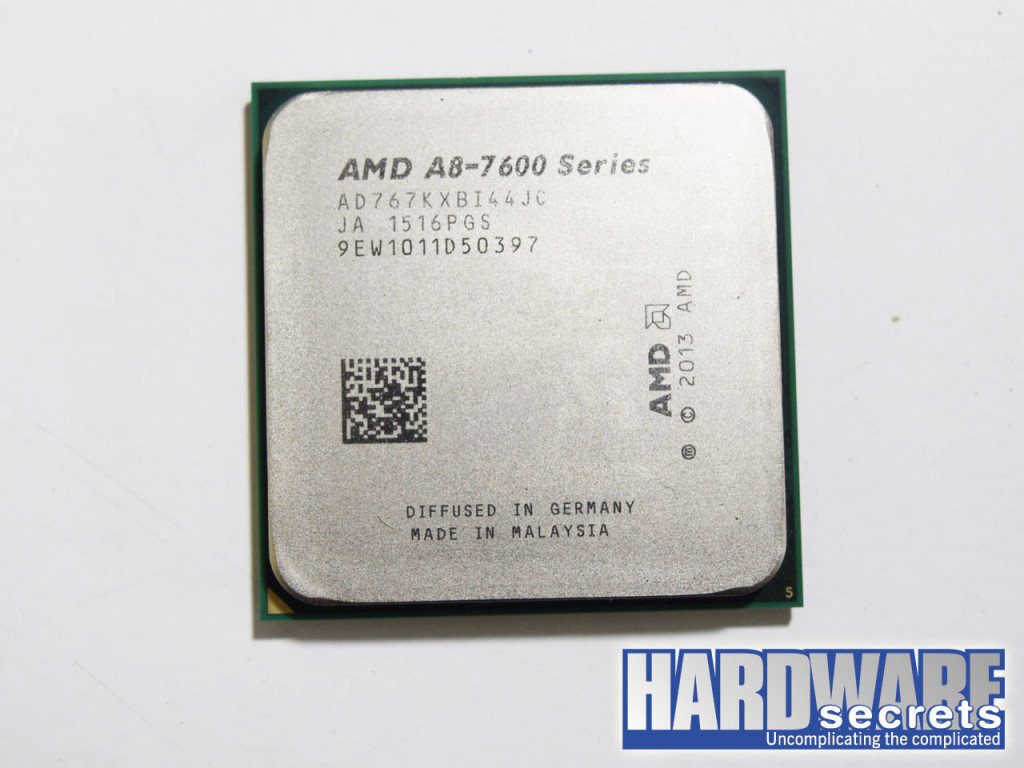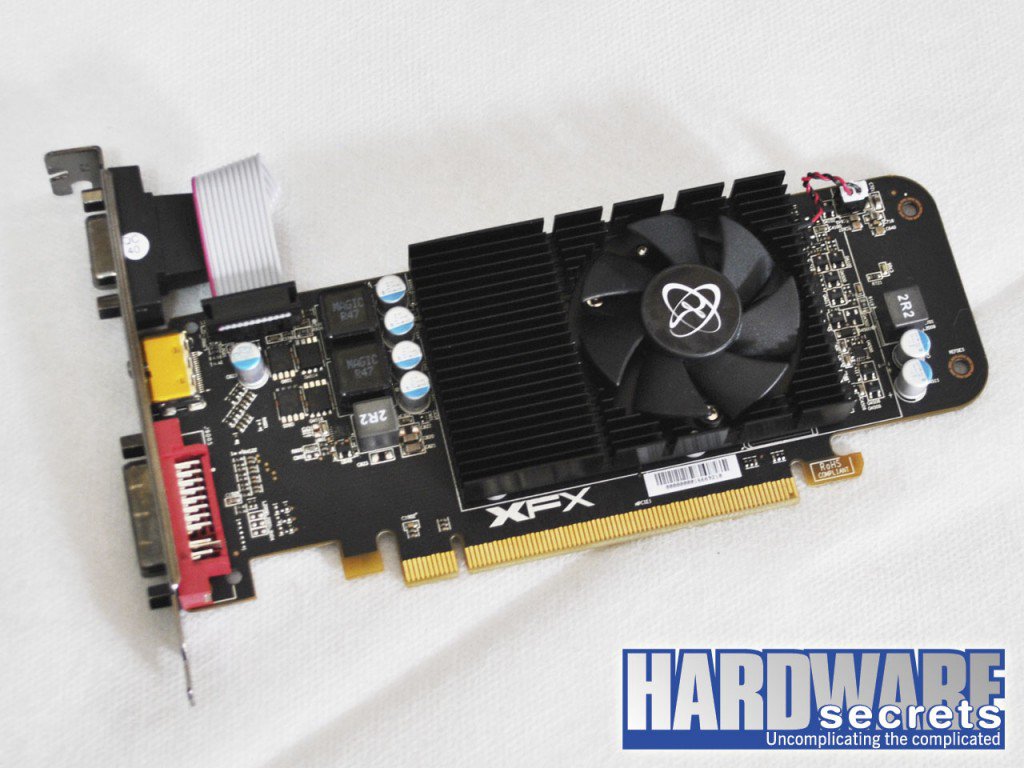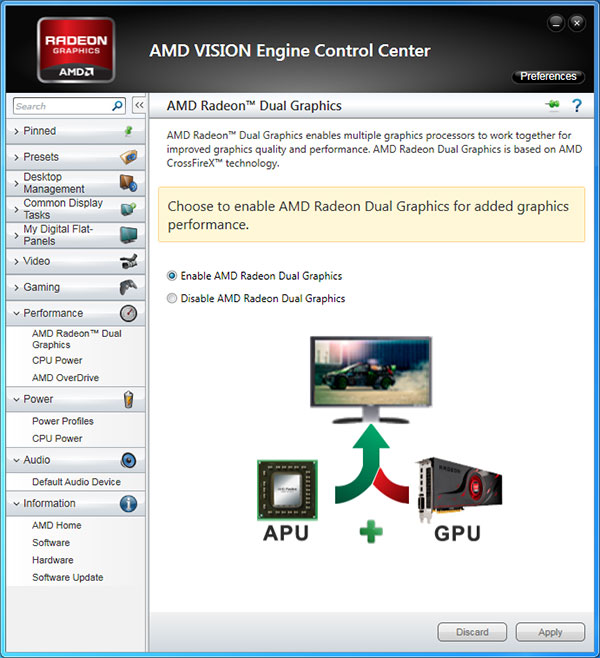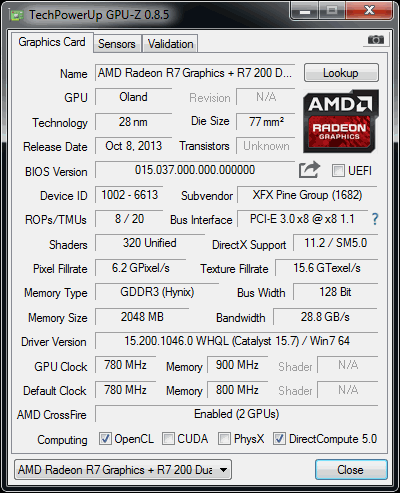[nextpage title=”Introduction”]
The AMD Dual Graphics technology (or Radeon Dual Graphics) can combine the processing power of the integrated video of an A-series processor (also called “APU” by the manufacturer) with a Radeon “real” video card, in order to increase performance on games and 3D applications. We tested a Dual Graphics array made with an A8-7670K processor and a Radeon R7 240 video card to verify if is there real performance improving with this configuration. Check it out!
The Dual Graphics technology is, actually, one of the implementations of the AMD CrossFire technology, but where you don’t use two video cards to work together, but one video card working together to the CPU integrated video. This technique was originally called “Hybrid CrossFire”, but the current implementation was named “Dual Graphics”. To know more about the subject, read our tutorial “SLI vs. CrossFire”.
However, it is not any video card that can be used on Dual Graphics. Each generation of A-series CPUs is compatible with certain models of Radeon video cards. The updated table can be found at AMD website.
We decided to test this technology combining the A8-7670K (which we tested recently) to the video card recommended by AMD to pair with this CPU, the Radeon R7 240 (which we also already tested).
We measured the performance with the integrated video alone, then with the Radeon R7 240 installed, but with the Dual Graphics technology disabled, and finally with the Dual Graphics enabled.
Figures 1 and 2 show the CPU and the video card we used in our tests.
 Figure 1: A8-7670K processor
Figure 1: A8-7670K processor
 Figure 2: XFX Radeon R7 240 video card
Figure 2: XFX Radeon R7 240 video card
In the next page, we will see how to configure Dual Graphics technology.
[nextpage title=”Configuring Dual Graphics Technology”]
Configuring the Dual Graphics technology is quite simple. Considering you are using the integrated video of your A6, A8 or A10 CPU, with the driver already installed, just install a compatible video card on your computer and turn it on. As soon as your video card is recognized by the driver, the configuration screen of the AMD Control Center will appear, with the Dual Graphics option already activated. See Figure 3.
 Figure 3: automatic activation of the Dual Graphics technology
Figure 3: automatic activation of the Dual Graphics technology
In order to check if the Dual Graphics technology is really activated, you can use a program like GPU-Z. Notice, in Figure 4, that the video adapter is shown as “AMD Radeon R7 Graphics + R7 200 Dual Graphics”. You can also see the field “AMD CrossFire” says it is enabled with two GPUs.
 Figure 4: checking if the Dual Graphics technology is correctly enabled
Figure 4: checking if the Dual Graphics technology is correctly enabled
If the Dual Graphics technology is not activated, check on the BIOS setup of your motherboard if the “Integrated Graphics” (or similar) option is enabled. On some motherboards, if this option is set as “Auto”, the integrated video is disabled if a video card is installed.
[nextpage title=”How We Tested”]
During our benchmarking sessions, we used the configuration listed below.
We tested with the integrated video (with no video card installed), then with the Radeon R7 240 video card installed but with the Dual Graphics disabled, and then with the Dual Graphics enabled.
Hardware Configuration
- Motherboard: ASRock FM2A88X Extreme6+
- CPU Cooler: AMD stock
- Memory: 8 GiB DDR3-2133, two G.Skill Ripjaws F3-17000CL9Q-16GBZH 4 GiB memory modules configured at 2,133 MHz dual channel
- Boot drive: Kingston HyperX Savage 480 GB
- Video Monitor: Philips 236VL
- Power Supply: Corsair CX500M
Operating System Configuration
- Windows 7 Home Premium 64-bit
- NTFS
- Video resolution: 1920 x 1080 60 Hz
Driver Versions
- AMD driver version: 15.7
Software Used
Error Margin
We adopted a 4% error margin. Thus, differences below 4% cannot be considered relevant. In other words, products with a performance difference below 4% should be considered as having similar performance.
[nextpage title=”3DMark”]
3DMark is a program with a set of several 3D benchmarks. Fire Strike benchmark measures DirectX 11 performance and is targeted to high-end gaming computers, while Sky Diver also measures DirectX 11 performance, but is aimed on average computers. The Cloud Gate benchmark measures DirectX 10 performance, and the Ice Storm Extreme measures DirectX 9 performance and is targeted to entry-level computers.

On the Fire Strike benchmark, the performance of the Dual Graphics was 73% higher than the performance of the Radeon R7 240 and 33% higher than the integrated video alone.

On the Sky Diver benchmark, the performance of the Dual Graphics was 76% higher than the performance of the Radeon R7 240 and 42% higher than the integrated video alone.

On the Cloud Gate test, the score of the Dual Graphics was 39% higher than the Radeon R7 240 and 20% higher than the integrated video alone.

On the Ice Storm Extreme, the performance with Dual Graphics was 51% higher than the performance with the Radeon R7 240, and 27% higher than the performance with the integrated video alone.
[nextpage title=”Gaming Performance (part 1)”]
Battlefield 4
Battlefield 4 is one of the most popular games of the Battlefield franchise, being released in 2013. It is based on the Frostbite 3 engine, which is DirectX 11. In order to measure performance using this game, we walked our way through the first mission, measuring the number of frames per second three times using FRAPS. We ran this game at 1920 x 1080, setting overall image quality at “medium.”
The results below are expressed in frames per second (fps) and they are the mean between the three collected results.

In this game, the Dual Graphics configuration was 92% faster than the Radeon R7 240 and 71% faster than the integrated video.
Dirt Rally
Dirt Rally is an off-road racing game released in April 2015, using Ego engine. To measure performance using this game, we ran the performance test included in the game, in 1920 x 1080 (Full HD) resolution and image quality configured as “low” and MSAA off.
The results below are expressed in frames per second (fps).

In this game, the performance with Dual Graphics was 13% higher than the R7 240 performance, and 10% higher than the integrated video.
Dragon Age: Inquisition
Dragon Age: Inquisition is the most recent game from the popular action RPG franchise Dragon Age. It was launched in November 2014 and uses the Frostbite 3 engine with SpeedTree.
We ran the game at 1920 x 1080 (Full HD), with all quality options at “low”, measuring three times the framerate with FRAPS.
The results below are expressed in frames per second and represent the arithmetical mean of the three collected results.

On Dragon Age: Inquisition, that game ran on Dual Graphics 76% faster than the Radeon R7 240 and 58% faster than the integrated video.
[nextpage title=”Gaming Performance (part 2)”]
Dying Light
Dying Light is an open-world horror game launched in January 2015, using the Chrome Engine 6. We tested the performance at this game with all quality options at minimum and 1280 x 720 resolution, measuring three times the framerate using FRAPS.
The results below are expressed in frames per second (fps) and they are the mean between the three collected results.

In this game, the performance with Dual Graphics was 53% higher than the R7 240 performance, and 28% higher than the integrated video.
Grand Theft Auto V
Grand Theft Auto V, or simply GTA V, is a open-world action game released for PCs in April of 2015, using the RAGE engine. In order to measure the performance on this game, we ran the performance test of the game (the plane part), measuring the framerate with FRAPS. We ran GTA V at 1280 x 720, with image quality set to the minimum.
The results below are expressed in frames per second.

On GTA V, the performance with Dual Graphics was 7% lower than the Radeon R7 240’s and similar to the integrated video.
Life is Strange
Life is Strange is a choice-based drama adventure game released in 2015, using the Unreal Engine 3. We tested the performance in this game playing the first scene with the quality options set as “low” and 1920 x 1080 resolution, measuring the number of frames per second three times using FRAPS.
The results below are expressed in frames per second (fps) and they are the mean between the three collected results.

On Life is Strange, the Dual Graphics was 15% faster than the Radeon R7 240, but 5% slower than the integrated video.
[nextpage title=”Conclusions”]
Our tests showed clearly that the AMD Dual Graphics technology really boosts the performance in games. On most of the tested games (as well as on the 3DMark benchmarks) the performance with the technology enabled was superior to the obtained with the integrated video alone or with the discreet video card.
In two games we ran, however, there was no performance difference. Our guess is that, in those tests, the performance was being limited by the CPU, which is not a high-end processor, after all.
Another important detail that was clear is that the integrated GPU of the A8-7670K is more powerful than the Radeon R7 240 video card we used. It makes sense, since the technical specs of this graphic engine are slightly superior to the ones of the used video card.
So, if you have an A8 or A10 CPU, there is no sense in buying an entry-level video card and disable the integrated video of the processor: you will be burning money and maybe even reducing the video performance of your computer. However, you will get a performance gain in most games if you buy a video card that can be used together with the integrated video of your processor using the Dual Graphics technology.

Leave a Reply